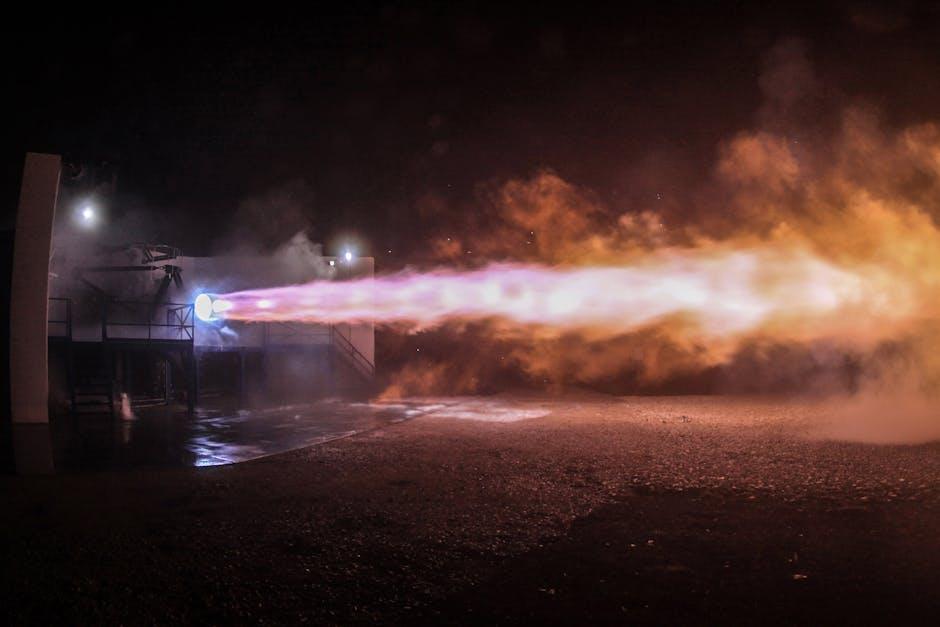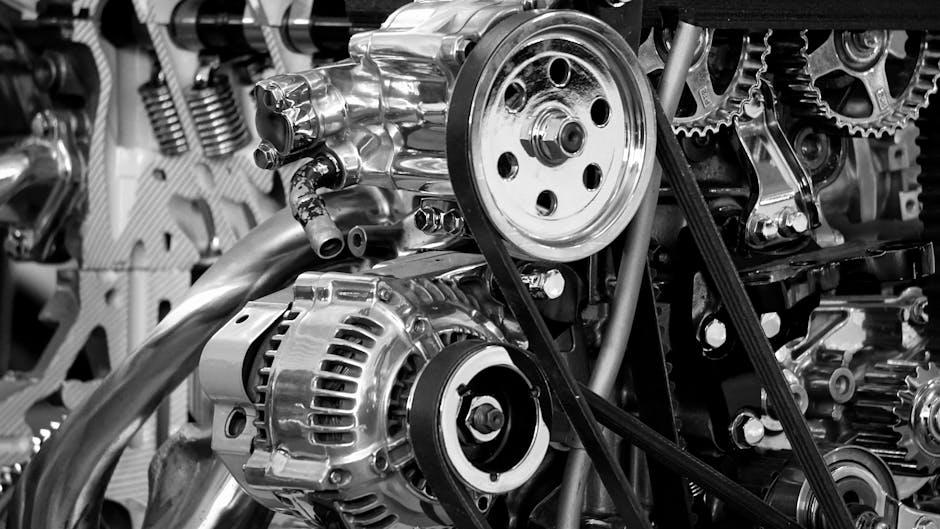An engine misfire can feel like a sudden hiccup in the smooth rhythm of your vehicle, disrupting its performance and leaving you wondering what went wrong under the hood. Whether it’s a subtle stutter or an unmistakable jolt, a misfire signals that something in the combustion process is out of sync. But fear not — understanding the causes behind these engine hiccups and learning how to address them can bring your car back to a steady, reliable hum. In this article, we’ll explore practical steps and expert tips on how to diagnose and fix engine misfires, helping you regain control of your ride with confidence and clarity.
Table of Contents
- Understanding the Root Causes of Engine Misfires
- Diagnosing Misfire Symptoms and Engine Codes
- Inspecting Spark Plugs and Ignition Components
- Evaluating Fuel System Performance and Injectors
- Checking Compression and Engine Mechanical Issues
- Preventive Maintenance Tips to Avoid Future Misfires
- Q&A
- The Conclusion

Understanding the Root Causes of Engine Misfires
Engine misfires occur when one or more cylinders in your vehicle fail to fire properly during combustion. This interruption can stem from a variety of issues, each disrupting the delicate balance of air, fuel, and spark needed for smooth engine performance. Common culprits include faulty spark plugs, ignition coil failures, or clogged fuel injectors, all of which hinder proper ignition. Additionally, vacuum leaks and sensor malfunctions, such as a damaged oxygen sensor or mass airflow sensor, can disturb the engine’s timing and fuel mixture, leading to misfires that affect power and fuel efficiency.
Understanding these root causes helps pinpoint the exact source of the problem, ensuring the right corrective action is taken. Here’s a brief overview of typical factors behind misfires:
- Ignition System Problems: Worn spark plugs, damaged wires, or faulty coils.
- Fuel Delivery Issues: Dirty injectors, low fuel pressure, or bad fuel pumps.
- Air Intake & Vacuum Leaks: Cracks in hoses or intake manifolds.
- Sensor Failures: Malfunctioning crankshaft or camshaft position sensors.
| Cause | Effect | Sign to Watch |
|---|---|---|
| Worn Spark Plug | Weak or no spark ignition | Rough idle, poor acceleration |
| Faulty Fuel Injector | Inadequate fuel delivery | Engine hesitation, black smoke |
| Vacuum Leak | Incorrect air-fuel ratio | High idle RPM, engine stalling |
| Sensor Malfunction | Wrong timing or fuel adjustments | Check engine light, reduced power |

Diagnosing Misfire Symptoms and Engine Codes
Recognizing the signs of an engine misfire early can save you from costly repairs down the line. Typical symptoms include a rough or shaky idle, a noticeable hesitation during acceleration, and a sudden drop in fuel efficiency. In many cases, you might also experience an illuminated check engine light, indicating a fault detected by your vehicle’s onboard diagnostics system. To get a precise diagnosis, plug in an OBD-II scanner to read the engine codes; these codes are the key to pinpointing which cylinder is misfiring or if the issue lies elsewhere, such as with the ignition system or fuel injectors.
Here’s a quick reference table outlining common misfire-related engine codes and their typical causes, helping you understand what to look for when diagnosing your vehicle:
| Engine Code | Description | Likely Cause |
|---|---|---|
| P0301 | Misfire Cylinder 1 | Faulty spark plug or injector |
| P0302 | Misfire Cylinder 2 | Ignition coil issue |
| P0303 | Misfire Cylinder 3 | Vacuum leak or fuel problem |
| P0300 | Random/Multiple Misfires | Ignition system or fuel delivery fault |
By interpreting these symptoms and codes effectively, you can systematically narrow down the problem and decide whether a simple spark plug replacement will suffice or if a deeper mechanical inspection is necessary. Always start the troubleshooting process by eliminating the most common causes first, ensuring a cost-effective and timely repair.

Inspecting Spark Plugs and Ignition Components
Ensuring your engine runs smoothly begins with a thorough check of your spark plugs and ignition components. Start by visually inspecting spark plugs for signs of wear such as
Next, turn your attention to the ignition coils, wires, and connectors. Look for corrosion, cracks in insulation, or loose fittings that might interrupt the electrical flow. Ignition coils can be tested with a multimeter to verify proper resistance levels, ensuring they’re capable of generating the voltage needed for the spark plugs. Below is a quick reference table for typical coil resistance values:
| Ignition Coil Type | Typical Resistance (Ω) |
|---|---|
| Primary Coil | 0.3 – 3.0 |
| Secondary Coil | 6,000 – 15,000 |
- Clean connectors with electrical contact cleaner to remove grime and oxidation.
- Replace spark plug wires if they appear brittle or cracked.
- Use dielectric grease on connections to prevent future corrosion.

Evaluating Fuel System Performance and Injectors
Assessing the fuel delivery system is critical when diagnosing engine misfires. A malfunctioning fuel injector can cause an uneven spray pattern or clogging, leading to improper combustion. Begin by inspecting each injector for leaks, cracks, or electrical issues. Utilizing a fuel injector cleaner or performing a professional ultrasonic cleaning can restore optimal spray performance. Additionally, checking the fuel pressure with a gauge ensures the fuel pump supplies adequate pressure, which is essential for proper engine operation.
Key indicators to look for during evaluation include:
- Irregular idling or hesitation on acceleration
- Poor fuel economy despite normal driving habits
- Fuel injectors that fail the resistance test
- Visible dirt or buildup inside the injectors
| Test | Purpose | Expected Range |
|---|---|---|
| Fuel Pressure Test | Check fuel pump output | 40-60 psi |
| Injector Resistance Test | Check coil integrity | 12-16 ohms |
| Injector Spray Pattern | Visual spray inspection | Even mist with no drips |

Checking Compression and Engine Mechanical Issues
When diagnosing engine misfires, evaluating compression is a crucial step. Low compression in one or more cylinders often signals worn piston rings, damaged valves, or a blown head gasket. Performing a compression test with a gauge can reveal discrepancies that point to internal engine wear. Take note of any cylinder readings that fall below manufacturer specifications, as these are clear indicators of mechanical issues requiring further inspection or repair. Such tests provide a quantifiable baseline, helping you pinpoint problem areas without guesswork.
Common signs of engine mechanical problems include:
- Uneven or low compression readings across cylinders
- Excessive oil consumption or smoke from the exhaust
- Knocking or rattling noises during acceleration
- Persistent coolant loss without visible leaks
Addressing these symptoms early can prevent further damage and costly repairs. Sometimes, a leak-down test is necessary to locate the exact source of compression loss, determining whether it’s the valves, piston rings, or head gasket. Proper maintenance combined with thorough diagnostics ensures the engine runs smoothly and eliminates misfire causes tied to mechanical integrity.
| Test Type | Purpose | Key Outcome |
|---|---|---|
| Compression Test | Measures cylinder pressure | Highlights low compression areas |
| Leak-Down Test | Identifies source of compression loss | Detects leaks in valves, rings, or gasket |

Preventive Maintenance Tips to Avoid Future Misfires
Consistent care is your best defense against engine misfires. Start by regularly inspecting and replacing spark plugs and ignition coils, as these components wear out over time and can trigger misfires. Keep your fuel injectors clean by using quality fuel and injector cleaners every few thousand miles, ensuring that fuel delivery remains smooth and efficient. Pay attention to your vehicle’s air filter; a clogged filter restricts airflow, which can disrupt the ideal air-fuel mixture and cause firing issues.
In addition to component checks, don’t overlook routine system diagnostics. Many modern vehicles offer onboard testing that can alert you to potential problems before they escalate. Consider creating a simple maintenance checklist to monitor the following:
- Spark Plug Gap and Condition
- Ignition Coil Functionality
- Fuel Injector Cleanliness
- Vacuum Leaks and Hose Integrity
- Oxygen Sensor Accuracy
| Maintenance Item | Recommended Frequency |
|---|---|
| Spark Plugs Replacement | Every 30,000 miles |
| Fuel Injector Cleaning | Every 20,000 miles |
| Air Filter Check | Every 12,000 miles |
| Ignition Coils Inspection | Every 40,000 miles |
Q&A
Q&A: How to Fix Engine Misfires
Q1: What exactly is an engine misfire?
A1: An engine misfire occurs when one or more cylinders in your vehicle’s engine fail to properly combust the air-fuel mixture. This leads to a disruption in the engine’s normal firing sequence, causing rough idling, loss of power, and sometimes a noticeable shaking.
Q2: What are common signs that my engine is misfiring?
A2: You might notice a few telltale signs: the engine runs unevenly or roughly, especially at idle; there’s a sudden drop in power; your Check Engine Light might come on; or you experience increased fuel consumption and even unusual exhaust smells.
Q3: What causes engine misfires?
A3: Misfires can be triggered by a variety of culprits, including faulty spark plugs, bad ignition coils, clogged fuel injectors, vacuum leaks, or even engine mechanical problems like low compression. Sometimes, it’s as simple as dirty air or fuel filters restricting flow.
Q4: How can I diagnose which cylinder is misfiring?
A4: Modern vehicles often log misfires in the onboard diagnostics (OBD) system, retrievable via an OBD-II scanner. The trouble codes typically indicate which cylinder is at fault. Additionally, mechanics listen for uneven engine rhythms or use specialized tools like cylinder compression testers.
Q5: Can I fix an engine misfire myself?
A5: If you have basic tools and some mechanical know-how, you can start with simple fixes: check and replace spark plugs, inspect ignition coils, or clean fuel injectors. For deeper issues like vacuum leaks or internal engine damage, professional diagnosis and repair are recommended.
Q6: What maintenance tips help prevent engine misfires?
A6: Regularly replace spark plugs and ignition wires, keep your fuel and air filters clean, use quality fuel, and stay on top of routine engine inspections. Preventative care keeps your combustion smooth and your engine happy.
Q7: When should I seek professional help?
A7: If misfires persist after basic troubleshooting, if the Check Engine Light blinks rather than stays steady, or if the vehicle experiences significant power loss or stalling, it’s time to visit a trusted mechanic to avoid further damage.
Q8: Can misfires damage my car?
A8: Yes. Repeated misfires can cause unburned fuel to enter the exhaust system, potentially damaging the catalytic converter—a costly repair. Prolonged misfiring can also strain engine components, so addressing issues promptly is crucial.
Q9: Is it expensive to fix engine misfires?
A9: Costs vary widely depending on the cause. Replacing spark plugs is relatively inexpensive; ignition coils or fuel injectors can cost more. However, ignoring the problem can lead to bigger, costlier repairs down the road.
Q10: What’s the takeaway for dealing with engine misfires?
A10: Engine misfires are a warning signal from your vehicle. Act quickly by identifying the cause, performing routine maintenance, and consulting professionals when needed. A smooth-running engine is all about timely care and attention.
The Conclusion
In the complex symphony of your engine’s performance, a misfire is a discordant note that demands attention. Tackling this issue can seem daunting, but with a clear understanding and methodical approach, you can restore harmony under the hood. Whether you choose to roll up your sleeves or consult a professional, addressing engine misfires promptly not only improves your vehicle’s efficiency but also extends its life. Remember, every engine has a story to tell — by tuning in carefully, you ensure the journey continues smoothly, mile after mile.

